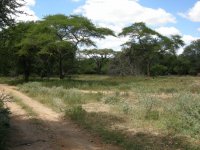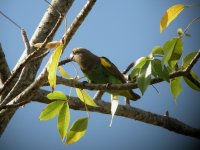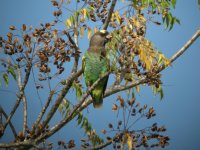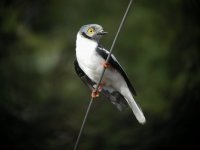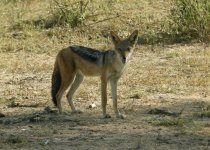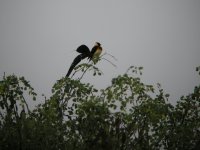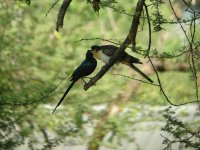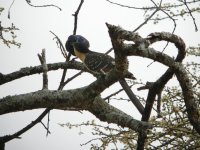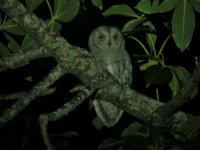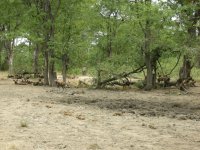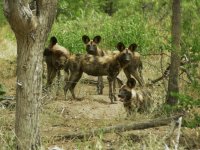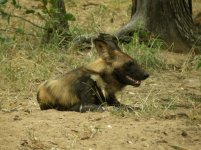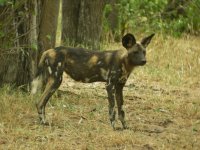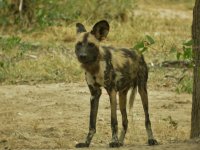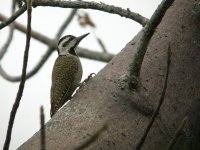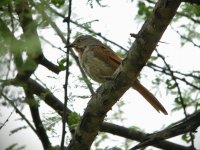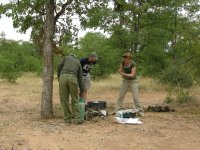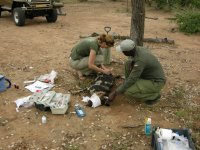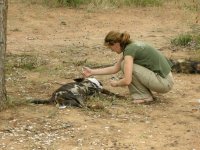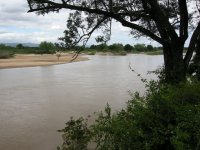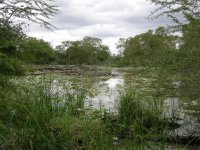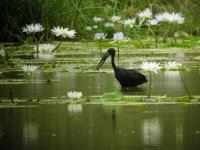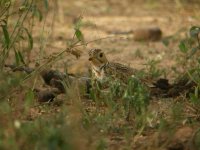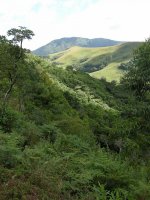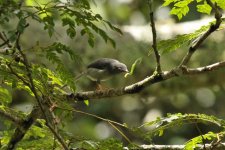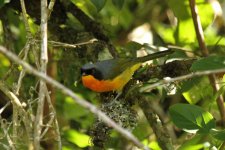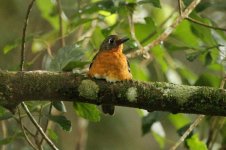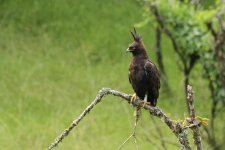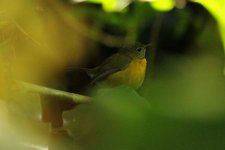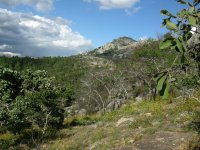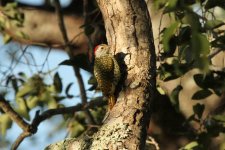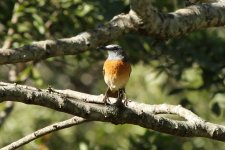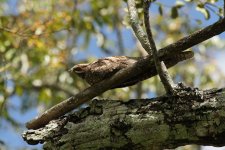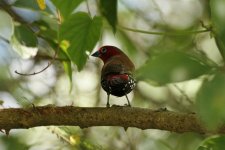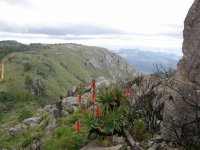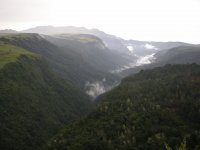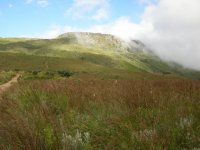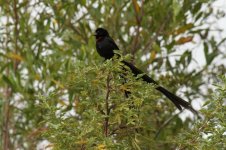Mark Harper
World Birder
Based on the lack of up to date trip reports that I could find Zimbabwe does not appear to be a popular destination, but probably deserves to be much more regularly visited by birders. I found the country to be beautiful, friendly and safe and for Africa almost hassle free, in fact standing outside the airport waiting to be collected by a friend there was no-one to bother me at all. My experience certainly changed my pre-conceived ideas of the country, this is not to say that it does not have political issues that may put off some tourists, but I would love to go back and explore it further. The people of Zimbabwe would certainly appreciate the additional tourists and you would have a holiday to remember.
Whilst the country does not have any endemic birds it does have 2 species only shared with Mozambique, Chirinda Apalis and Robert’s Prinia, as well as Swynnerton’s Robin which is very localised, as well as a host of other great birds and wildlife, including a good concentration of African Wild Dogs.
21st March
I arrived in Harare via Dubai, the plane landing at 17.05, which was 15 minutes early and having paid my $55 for a visa I was outside waiting with my baggage within 20 minutes. Collected by my friend Rosemary Groom, an expert on African Wild Dogs, we were on our way to our Harare B&B, via a pizza place.
22nd March
Stepping outside of the B&B in the morning European Bee-eaters were the first birds noted as they flew over calling and a day would not pass for the rest of the trip when these were not seen or heard. Rosemary had some errands to run in Harare so we spent all day around town, so there were not too many birds seen, but the obvious highlight were several Abdim’s Storks, which were only see in Harare. Purple-crested Turaco, Crested Barbet, Kurrichane Thrush, Variable Sunbird and Southern Black Flycatcher were all noted in gardens of various friends visited and to add that real African touch we were invited to a braai in the evening.
23rd March
An early start and we were on the 4.5 hour drive south to Chishakwe Ranch in Save Valley Conservancy (“SVC”) where Rosemary lives. As always when on a long drive in a new country there was a lot to see on the way, but we were also keen to get to SVC so the only birds identified were big and obvious such as White Stork, Black-headed Heron, Secretarybird, Black-shouldered Kite, Long-crested Eagle and Lilac-breasted Roller. A male Red-footed Falcon on a wire proved to be the only one seen during the trip, I was probably a bit late to have seen the large numbers that migrate through Zimbabwe and as both Western Red-footed Falcon and Amur Falcon are possible and we did not stop I will never know which it was.
As promised by Rosemary we picked up my first lifer between the Conservancy entrance and Rosemary’s house with Meve’s Glossy Starling proving to be very common. Another of the birds I had been guaranteed was waiting in the garden on arrival, a fabulous pair of Meyer’s Parrots were feeding in the baobab, unfortunately bees had taken over their previous years nest hole after an elephant knocked down the tree in which the bees had their hive, Southern Red-billed Hornbills were however nesting in the tree.
Whilst Rosemary caught up on some work I explored the area around her house, although a little cautiously at first knowing that lions had made kills in her garden previously. Some of the species I encountered and I would get to see on a daily basis included 5 species of Dove, Grey Lourie, African Hoopoe, Chinspot Batis, White Helmetshrike, Red-backed Shrike, Fork-tailed Drongo, Southern Black Tit and Blue-breasted Cordonbleu. I spent quite a while studying the Glossy-Starling’s eventually deciding that they were all Greater Blue-eared. A pair of Groundscraper Thrushes were hopping around the garden and whilst I assumed I would see these regularly it was not until over 2 weeks later that I would see another.
I had been hearing an African Fish Eagle for a while, so eventually spent some time scanning the skies, eventually locating the Fish Eagle and also seeing White-backed Vultures, Bateleur and Wahlberg’s Eagle. The only Swifts positively identified were African Palm and Little, but over the next few days I would also add White-rumped and African Black over the garden.
Fortunately I had not wandered too far as a radio call from one of the African Wildlife Conservation Fund scouts notified us that he was with the Batani pack of African Wild Dogs and that they were in a good area to see them and I was keen to go and see them so off we headed.
SVC is divided into multiple ranches with different owners, so visitors are restricted to game drives within the ranch on which they are staying, but as a researcher Rosemary has fairly free access to all ranches within the conservancy for the purpose of her work. The drive to where the pack of dogs was, was mostly through Sango ranch and the quantity of Masai Giraffe, Plains Zebra, Impala and Blue Wildebeast on this property was very impressive.
Stops to watch the game delayed us for a while and unfortunately by the time we got to where the dogs were they had moved and a close approach by vehicle was no longer possible, so we had to approach on foot. Whilst we were able to get close enough to download the data from one of the dogs collars they soon saw us and ran off through the trees with only the briefest of views achieved.
As the dogs had been near a water source I was able to add Hammerkop and African Openbill to my growing bird list. The return drive was in the dark, which enabled us to see Fiery-necked Nightjar and Spotted Eagle-Owl both sitting on the road. Whilst I cooked some dinner on our return one of my real African bogey birds, African Scop’s Owl, called from nearby, but by the time I was ready to go searching it had gone quiet and would have to wait for another day.
Whilst the country does not have any endemic birds it does have 2 species only shared with Mozambique, Chirinda Apalis and Robert’s Prinia, as well as Swynnerton’s Robin which is very localised, as well as a host of other great birds and wildlife, including a good concentration of African Wild Dogs.
21st March
I arrived in Harare via Dubai, the plane landing at 17.05, which was 15 minutes early and having paid my $55 for a visa I was outside waiting with my baggage within 20 minutes. Collected by my friend Rosemary Groom, an expert on African Wild Dogs, we were on our way to our Harare B&B, via a pizza place.
22nd March
Stepping outside of the B&B in the morning European Bee-eaters were the first birds noted as they flew over calling and a day would not pass for the rest of the trip when these were not seen or heard. Rosemary had some errands to run in Harare so we spent all day around town, so there were not too many birds seen, but the obvious highlight were several Abdim’s Storks, which were only see in Harare. Purple-crested Turaco, Crested Barbet, Kurrichane Thrush, Variable Sunbird and Southern Black Flycatcher were all noted in gardens of various friends visited and to add that real African touch we were invited to a braai in the evening.
23rd March
An early start and we were on the 4.5 hour drive south to Chishakwe Ranch in Save Valley Conservancy (“SVC”) where Rosemary lives. As always when on a long drive in a new country there was a lot to see on the way, but we were also keen to get to SVC so the only birds identified were big and obvious such as White Stork, Black-headed Heron, Secretarybird, Black-shouldered Kite, Long-crested Eagle and Lilac-breasted Roller. A male Red-footed Falcon on a wire proved to be the only one seen during the trip, I was probably a bit late to have seen the large numbers that migrate through Zimbabwe and as both Western Red-footed Falcon and Amur Falcon are possible and we did not stop I will never know which it was.
As promised by Rosemary we picked up my first lifer between the Conservancy entrance and Rosemary’s house with Meve’s Glossy Starling proving to be very common. Another of the birds I had been guaranteed was waiting in the garden on arrival, a fabulous pair of Meyer’s Parrots were feeding in the baobab, unfortunately bees had taken over their previous years nest hole after an elephant knocked down the tree in which the bees had their hive, Southern Red-billed Hornbills were however nesting in the tree.
Whilst Rosemary caught up on some work I explored the area around her house, although a little cautiously at first knowing that lions had made kills in her garden previously. Some of the species I encountered and I would get to see on a daily basis included 5 species of Dove, Grey Lourie, African Hoopoe, Chinspot Batis, White Helmetshrike, Red-backed Shrike, Fork-tailed Drongo, Southern Black Tit and Blue-breasted Cordonbleu. I spent quite a while studying the Glossy-Starling’s eventually deciding that they were all Greater Blue-eared. A pair of Groundscraper Thrushes were hopping around the garden and whilst I assumed I would see these regularly it was not until over 2 weeks later that I would see another.
I had been hearing an African Fish Eagle for a while, so eventually spent some time scanning the skies, eventually locating the Fish Eagle and also seeing White-backed Vultures, Bateleur and Wahlberg’s Eagle. The only Swifts positively identified were African Palm and Little, but over the next few days I would also add White-rumped and African Black over the garden.
Fortunately I had not wandered too far as a radio call from one of the African Wildlife Conservation Fund scouts notified us that he was with the Batani pack of African Wild Dogs and that they were in a good area to see them and I was keen to go and see them so off we headed.
SVC is divided into multiple ranches with different owners, so visitors are restricted to game drives within the ranch on which they are staying, but as a researcher Rosemary has fairly free access to all ranches within the conservancy for the purpose of her work. The drive to where the pack of dogs was, was mostly through Sango ranch and the quantity of Masai Giraffe, Plains Zebra, Impala and Blue Wildebeast on this property was very impressive.
Stops to watch the game delayed us for a while and unfortunately by the time we got to where the dogs were they had moved and a close approach by vehicle was no longer possible, so we had to approach on foot. Whilst we were able to get close enough to download the data from one of the dogs collars they soon saw us and ran off through the trees with only the briefest of views achieved.
As the dogs had been near a water source I was able to add Hammerkop and African Openbill to my growing bird list. The return drive was in the dark, which enabled us to see Fiery-necked Nightjar and Spotted Eagle-Owl both sitting on the road. Whilst I cooked some dinner on our return one of my real African bogey birds, African Scop’s Owl, called from nearby, but by the time I was ready to go searching it had gone quiet and would have to wait for another day.




